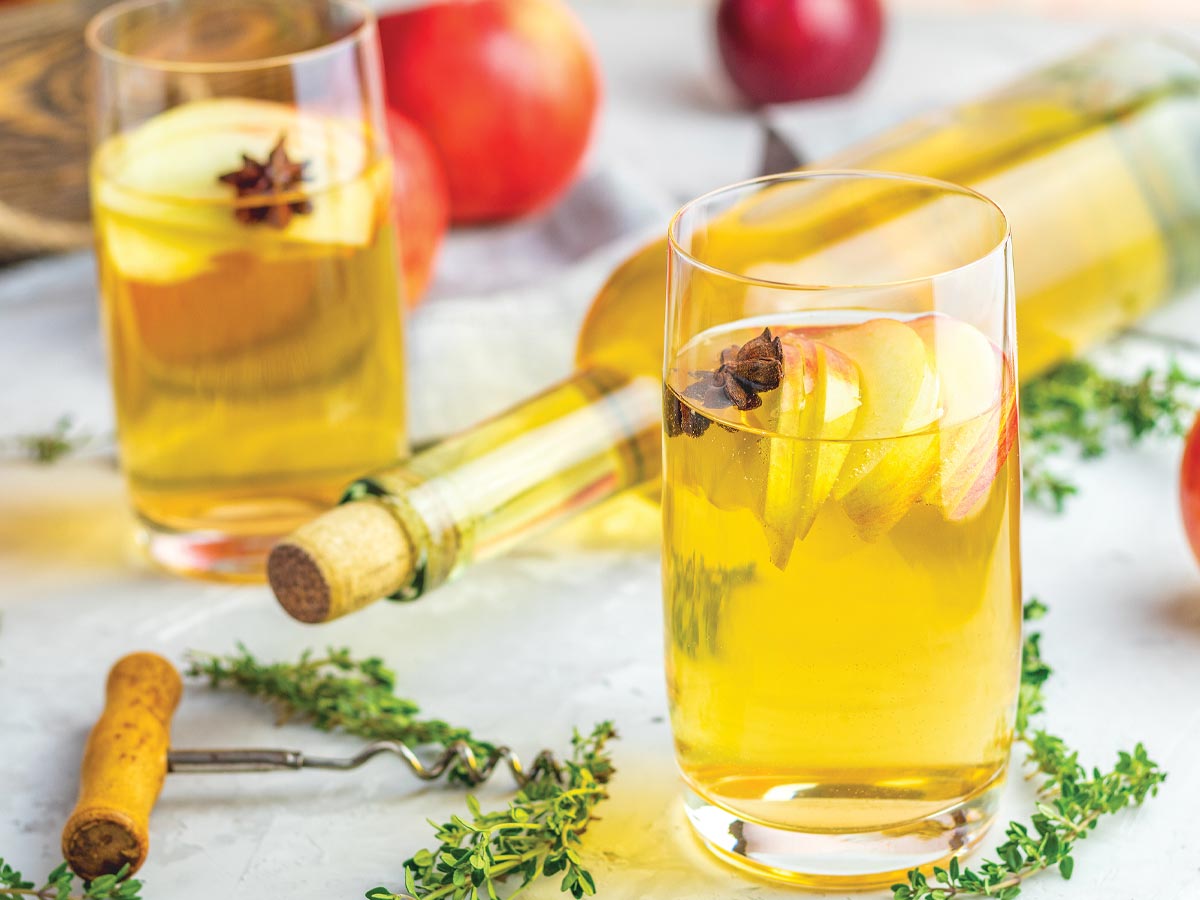By CRAIG THOMAS NAYLOR
Spring is apple cider pressing time!
Like most, I press in the fall, but as snow melts into memory, and we welcome the sunshine, apples in storage need to be used before they spoil. We’ve spent winter enjoying Golden Russets with hunks of cheddar, Black Oxfords with peanut butter, Prairie Spy, Arkansas Black, and Old Nonpareil baked into pies, but the remainder are turning soft.
My parents, raised during the Great Depression, always forbid letting food go to waste.
I cut apples into quarters, shred them in the hopper, and squeeze. Starches in the heirlooms I grow have turned to sugar. Water has evaporated. Ten gallons of fruit yield only two-and-a-half gallons of potent juice, about two-thirds of a fall press.
Fermentation comes next, a surprisingly complicated process. There are three options. The traditional process used in Britain puts the juice directly into oak barrels where natural yeasts turn the juice into cider. The French let the ground apple pomace sit overnight, turning the rich brown color we’ve all seen on cut apples.
After pressing this slimy mess, natural yeasts create chapeau brun (brown hat), a layer of foamy scum that gives French ciders their distinctive taste. The disadvantage of this system is, instead of cider, one can end up with a barrel full of vinegar.
The second method adds a mild sulfur solution, to kill natural yeasts. After a day to let the sulfur off gas, a commercial yeast is added. But which yeast? Some stop fermenting when the alcohol content rises to around 5 percent, leaving residual sugar for a sweeter beverage. Others can handle up to 15 percent alcohol, far above the 7 to 9 percent cider produces.
I take a third option. I allow natural yeasts to flourish but also add a commercial yeast with a high alcohol tolerance. The combination yields a light cider with an earthy quality.
I like this process because it allows my tenuous attention span to leave the juice on the lees (the sediment on the bottom of the fermenting vessel) without getting an off taste that other yeasts often leave.
After a month (too quick for me) to three months (about right) to a year (life happens, sometimes), I bottle cider or sparkling cider, where I add a bit of sugar, cap it like a soda bottle, and let the yeast naturally add bubbles. This takes about a month, and, yes, I have misjudged and had bottles explode. Always open the first bottle outside.
I remember an apple-cranberry blend from my early days shooting foam skyward like a NASA space launch. When the excitement was over, I had a half cup of delicious drink left from a full-sized champagne bottle.
My last press for this crop year is done. The juice is bubbling away, and it’s time to turn my attention to spring activities like pruning, controlling voles, and other chores, to ensure a fine crop in the fall. The perfect time for an afternoon with a friend enjoying a delicious glass of the labor of my fruits. MSN









